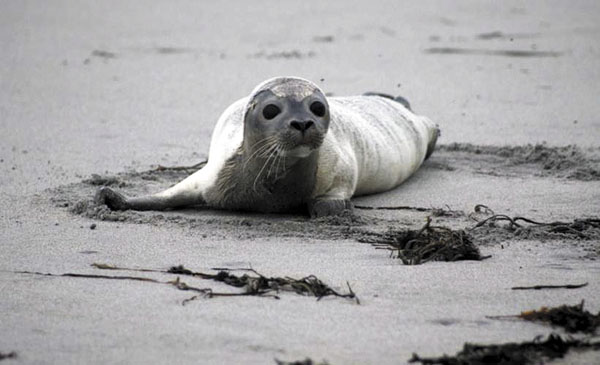BOSTON — An influenza virus similar to one found in wild birds but never before seen in seals has been linked to the recent spate of harbor seal deaths off northern New England, scientists said Tuesday.
Since Sept. 1, 162 seals have been found dead from northern Massachusetts to Maine.
The die-off struck young seals and was most intense in September and October, when deaths were about three to four times the normal number, said Charles Innes, the New England Aquarium’s health director. The death rate has since slowed to normal levels.
Tests on five of the dead animals — all from New Hampshire — showed they suffered a bacterial pneumonia caused by the influenza virus subtype, H3N8. Tests are continuing to determine what role the virus played in the broader seal die-off, researchers said.
Besides birds, a separate group of H3N8 hits horses and dogs, but those animals generally recover.
Scientists said the virus appears to have low risk for transmission to humans. But Catherine Brown, State Public Health Veterinarian in Massachusetts, said when influenza jumps between species, it’s important to try to learn why.
“Every time that happens, the more we can learn about what causes that to happen, the more we can actually work to prevent it from happening and protect human health as well as animal health,” she said.
Other influenza viruses have been linked to at least three previous seal die-offs in New England since 1979.
This time, the first calls about dead harbor seals came from surfers in New Hampshire in early September, and reports kept coming. Scientists said Tuesday there are no known environmental or manmade causes to explain it.
So far, the outbreak has been exclusive to harbor seals, though other species are active around New England.
Gray seals have become famous, or infamous, for gathering in huge numbers off Cape Cod and juvenile harp seals are expected to make their annual appearances around the coast by the end of the month.
Hon Ip, head of the Diagnostic Virology Laboratory at the National Wildlife Health Center, said since almost all animal influenzas can be traced back to birds, it’s prudent to pay close attention when a previously bird-only virus leaps to a species that is also susceptible to human influenza strains.
It’s not known to be happening in this case, but such viruses can become more virulent after making that jump, Ip said.
“We want everybody to be aware of and start thinking about potential risks that such an event poses,” he said.
Send questions/comments to the editors.



Success. Please wait for the page to reload. If the page does not reload within 5 seconds, please refresh the page.
Enter your email and password to access comments.
Hi, to comment on stories you must . This profile is in addition to your subscription and website login.
Already have a commenting profile? .
Invalid username/password.
Please check your email to confirm and complete your registration.
Only subscribers are eligible to post comments. Please subscribe or login first for digital access. Here’s why.
Use the form below to reset your password. When you've submitted your account email, we will send an email with a reset code.